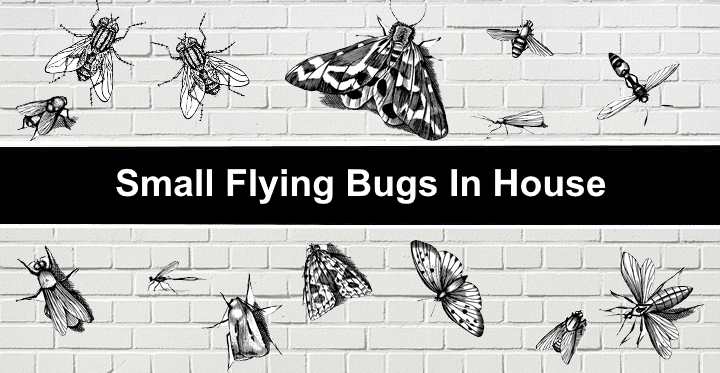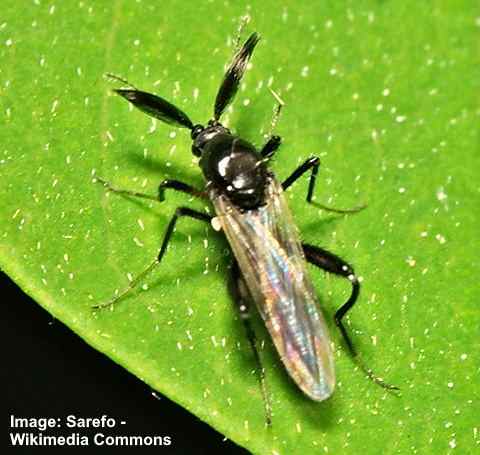What Are These Tiny Flying Creatures?
Small bugs flying in house can be a nuisance and a health concern for homeowners. These tiny flying creatures can be identified as fruit flies, gnats, and mosquitoes, among others. Fruit flies, for instance, are attracted to sweet or fermented substances and can lay eggs near the surface of these materials. Gnats, on the other hand, thrive in moist environments and can be found near overwatered plants or clogged drains. Mosquitoes, meanwhile, are known to transmit diseases such as malaria and Zika virus, making them a significant health risk.
These small flying bugs can enter homes through open windows, doors, or vents, and can be introduced through infested items such as plants, flowers, or second-hand furniture. Once inside, they can multiply rapidly, leading to a large infestation. It is essential to identify the type of bug and its habits to effectively eliminate them from the home.
Some common characteristics of small flying bugs include their tiny size, usually ranging from 1-5 millimeters in length, and their ability to fly quickly and erratically. They often have large compound eyes and a distinctive body shape, such as the fruit fly’s rounded abdomen or the mosquito’s long, thin body. Understanding these characteristics can help homeowners identify the type of bug they are dealing with and take the necessary steps to eliminate them.
In addition to their annoying buzzing and biting, small flying bugs can also pose health risks to humans. For example, mosquitoes can transmit diseases, while fruit flies and gnats can contaminate food and surfaces with their saliva and feces. It is crucial to take action to eliminate these bugs from the home to prevent the spread of disease and maintain a clean and healthy environment.
By understanding the habits and characteristics of small flying bugs, homeowners can take the first step towards eliminating them from their homes. In the next section, we will discuss the steps to take to get rid of these unwanted winged guests.
How to Get Rid of Small Flying Bugs in Your House
Eliminating small flying bugs from your home requires a comprehensive approach that involves cleaning, decluttering, removing food sources, and using traps and insecticides. The first step is to thoroughly clean and declutter your home, paying attention to areas where bugs are most commonly found, such as kitchens, bathrooms, and near trash cans.
Remove any food sources that may be attracting the bugs, such as overripe fruit, soda, and beer. Regularly clean and sanitize surfaces, especially around sinks, stoves, and refrigerators. Take out the trash regularly and keep it in sealed bins. Additionally, eliminate standing water and moisture, which can attract bugs.
Use traps to capture and eliminate small flying bugs. There are various types of traps available, including sticky traps, UV light traps, and bait traps. Place traps in areas where bugs are most active, such as near food sources or in areas with high humidity. Replace traps regularly to ensure effectiveness.
Insecticides can also be used to eliminate small flying bugs. However, it’s essential to use them safely and effectively. Choose insecticides that are specifically labeled for use against small flying bugs, and follow the instructions carefully. Spray insecticides in areas where bugs are most active, but avoid spraying near food, pets, or people.
For severe infestations, consider using a combination of traps and insecticides. This approach can help eliminate bugs quickly and effectively. However, it’s crucial to take steps to prevent re-infestation, such as sealing entry points and reducing moisture levels.
Some popular DIY methods for getting rid of small flying bugs include using apple cider vinegar, wine, and beer to trap bugs. These methods can be effective, but they may not be as efficient as using commercial traps or insecticides. Additionally, some essential oils, such as peppermint and lemongrass, can be used to repel small flying bugs.
By following these steps, you can effectively eliminate small flying bugs from your home. Remember to be patient and persistent, as it may take some time to completely eliminate the bugs. In the next section, we will discuss the common entry points for small flying bugs and how to seal them to prevent re-infestation.
Common Entry Points for Small Flying Bugs
Small flying bugs can enter homes through various entry points, making it essential to identify and seal these areas to prevent re-infestation. One of the most common entry points for small flying bugs is open windows and doors. Bugs can fly in through open windows, especially during warm weather, and doors can provide an entry point if they are not properly sealed.
Vents and pipes are also common entry points for small flying bugs. Bugs can enter homes through vents, such as dryer vents, bathroom vents, and kitchen vents, if they are not properly screened or sealed. Pipes, especially those that lead to the outdoors, can also provide an entry point for bugs if they are not properly sealed.
Other common entry points for small flying bugs include cracks and crevices around windows and doors, gaps around pipes and electrical outlets, and holes in screens. Bugs can also enter homes through infested items, such as plants, flowers, or second-hand furniture.
To prevent small flying bugs from entering your home, it’s essential to seal all entry points. Install window screens and door screens to keep bugs out, and repair any torn or damaged screens. Seal any cracks and crevices around windows and doors using caulk or weatherstripping. Install door sweeps or threshold seals to prevent bugs from entering under doors.
Regularly inspect your home’s exterior and interior for any signs of bug infestation, and seal any entry points you find. Keep your home clean and clutter-free, and eliminate any food sources that may be attracting bugs. By sealing entry points and maintaining a clean and clutter-free home, you can prevent small flying bugs from entering your home and reduce the risk of infestation.
In addition to sealing entry points, it’s also essential to reduce moisture levels in your home to prevent small flying bugs from being attracted to your home. In the next section, we will discuss the role of moisture in attracting small flying bugs and provide tips on how to reduce moisture levels.
The Role of Moisture in Attracting Small Flying Bugs
Excess moisture in homes can attract small flying bugs, making it essential to reduce moisture levels to prevent infestation. Small flying bugs, such as fruit flies and gnats, are attracted to moisture and can thrive in humid environments. Moisture can come from various sources, including leaks, condensation, and high humidity.
One of the most common sources of moisture in homes is water leaks. Leaks can occur in pipes, faucets, and appliances, and can create an ideal environment for small flying bugs to breed. Fixing water leaks promptly can help reduce moisture levels and prevent infestation.
Condensation is another common source of moisture in homes. Condensation can occur on windows, walls, and ceilings, and can create a humid environment that attracts small flying bugs. Using a dehumidifier can help reduce condensation and moisture levels.
High humidity can also attract small flying bugs. Humidity can be caused by various factors, including weather, cooking, and showering. Using a dehumidifier or ensuring good ventilation can help reduce humidity levels and prevent infestation.
To reduce moisture levels and prevent small flying bugs from being attracted to your home, consider the following tips:
Use a dehumidifier to reduce humidity levels, especially in areas prone to moisture, such as basements and bathrooms.
Fix water leaks promptly to prevent moisture from accumulating.
Ensure good ventilation in your home, especially in areas prone to moisture, such as kitchens and bathrooms.
Use a hygrometer to measure humidity levels in your home and adjust your dehumidifier or ventilation accordingly.
By reducing moisture levels and preventing excess moisture from accumulating, you can create an environment that is less conducive to small flying bugs. In the next section, we will discuss the effectiveness of essential oils in repelling small flying bugs.
Using Essential Oils to Repel Small Flying Bugs
Essential oils can be an effective and natural way to repel small flying bugs, such as mosquitoes and gnats. Certain essential oils, such as peppermint, lemongrass, and citronella, have been shown to repel small flying bugs and can be used in a variety of ways to keep them at bay.
One way to use essential oils to repel small flying bugs is to make a homemade bug spray. Simply mix a few drops of the essential oil with water and spray it around the area where the bugs are present. You can also add a few drops of the essential oil to a diffuser to create a bug-repelling mist.
Here are a few recipes for homemade bug sprays and diffusers using essential oils:
Peppermint Bug Spray: Mix 10 drops of peppermint essential oil with 2 cups of water and spray it around the area where the bugs are present.
Lemongrass Bug Spray: Mix 10 drops of lemongrass essential oil with 2 cups of water and spray it around the area where the bugs are present.
Citronella Bug Diffuser: Mix 10 drops of citronella essential oil with 1 cup of water and add it to a diffuser to create a bug-repelling mist.
Another way to use essential oils to repel small flying bugs is to add them to your cleaning products. Simply add a few drops of the essential oil to your cleaning solution and use it to clean surfaces and floors.
Essential oils can be a safe and effective way to repel small flying bugs, but it’s essential to use them in moderation and in combination with other methods of bug control. In the next section, we will discuss when to call a pest control professional to eliminate small flying bugs.
When to Call a Pest Control Professional
While it’s possible to eliminate small flying bugs on your own, there are situations where it’s necessary to call a pest control professional. If you have a large infestation of small flying bugs, or if the problem persists despite your best efforts to eliminate them, it may be time to call in a professional.
Pest control professionals have the training, equipment, and expertise to effectively eliminate small flying bugs and prevent future infestations. They can identify the source of the problem and provide a customized solution to eliminate the bugs and prevent them from coming back.
Some signs that you may need to call a pest control professional include:
A large number of small flying bugs in your home, especially if they are concentrated in one area.
Persistent problems with small flying bugs, despite your best efforts to eliminate them.
Signs of bug infestation, such as droppings, eggs, or actual bugs in your home.
If you’re not sure whether you need to call a pest control professional, consider the following questions:
Are the small flying bugs causing a significant problem in your home?
Have you tried to eliminate the bugs on your own, but the problem persists?
Do you have a large infestation of small flying bugs?
If you answered “yes” to any of these questions, it may be time to call a pest control professional. In the next section, we will discuss how to prevent future infestations of small flying bugs.
Preventing Future Infestations of Small Flying Bugs
To prevent future infestations of small flying bugs, it’s essential to maintain a clean and tidy home, store food properly, and use window screens. Regular cleaning can help eliminate any potential food sources that may attract small flying bugs, while storing food properly can prevent them from being attracted to your home in the first place.
Here are some tips to help prevent future infestations of small flying bugs:
Regularly clean and declutter your home, paying attention to areas where small flying bugs are most commonly found, such as kitchens and bathrooms.
Store food in sealed containers and clean up any spills or crumbs promptly.
Use window screens to prevent small flying bugs from entering your home through open windows.
Fix any water leaks or condensation issues to prevent excess moisture from accumulating in your home.
Use a dehumidifier to reduce moisture levels in your home, especially in areas prone to moisture, such as basements and bathrooms.
By following these tips, you can help prevent future infestations of small flying bugs and maintain a clean and healthy home. In the next section, we will summarize the main points of the article and encourage readers to take action to eliminate small flying bugs from their homes.
Conclusion: Taking Back Your Home from Unwanted Winged Guests
In conclusion, small flying bugs can be a nuisance and a health risk in homes, but there are steps you can take to eliminate them and prevent future infestations. By understanding the common types of small flying bugs, their characteristics, habits, and potential health risks, you can take the first step towards taking back your home from these unwanted winged guests.
Remember to clean and declutter your home, remove food sources, and use traps and insecticides to eliminate small flying bugs. Seal common entry points, reduce moisture levels, and use essential oils to repel small flying bugs. If the problem persists, consider calling a pest control professional.
By following the tips and advice outlined in this article, you can help prevent future infestations of small flying bugs and maintain a clean and healthy home. Don’t let small flying bugs take over your home – take action today and take back your space!
By taking the necessary steps to eliminate small flying bugs, you can enjoy a pest-free home and reduce the risk of health problems associated with these unwanted winged guests. Remember, a clean and healthy home is just a few steps away.









/natural-ways-get-rid-insects-your-home-4864214-v2-2041dbe12ebf4e6c849ad4342c07ae61.jpg)